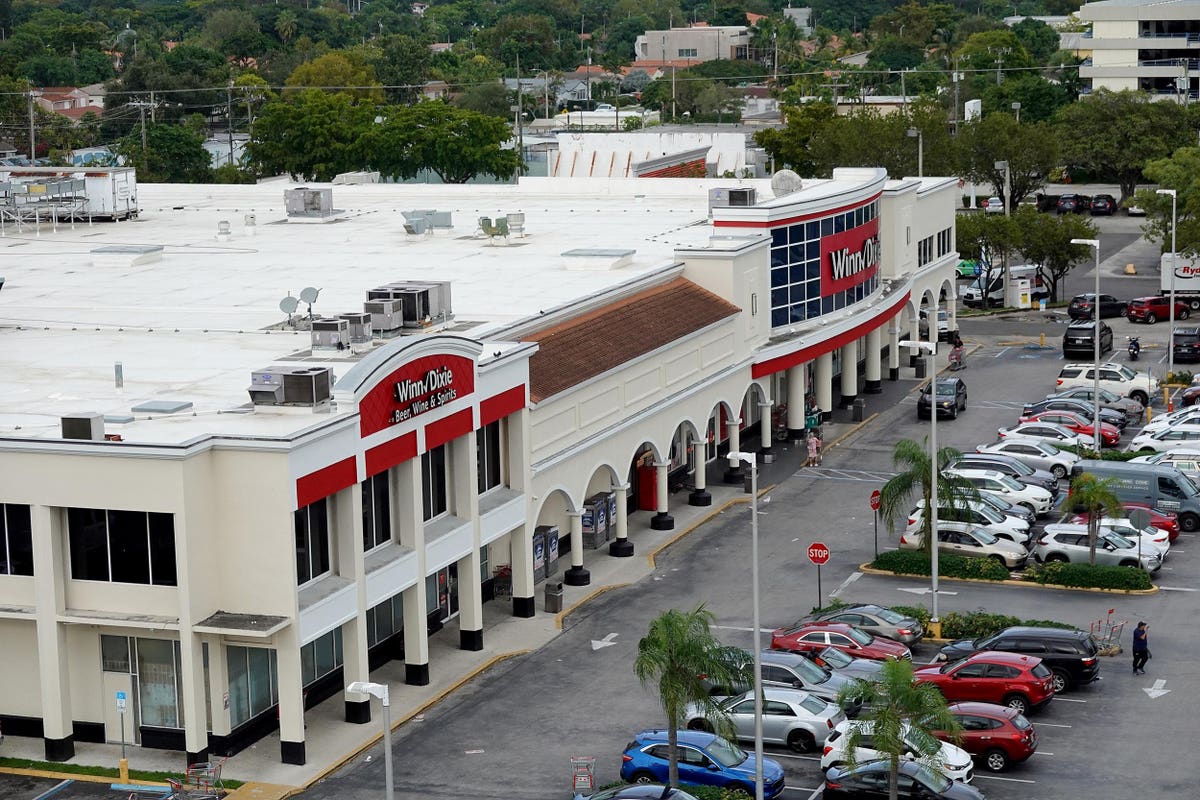ALDI announced its latest industry wake-up call, an earthquake if you will, an agreement to acquire Winn-Dixie and Harvey’s Supermarket. A move that might appear to be a mismatch as the leading small store discounter tackles the more conventional supermarket space.
ALDI, under Jason Hart’s leadership, has become not only one of the fastest growing supermarket chains in the United States, but as he shared with me for a previous Forbes column, his plan is to spend billions to become the third-largest grocer in the U.S. by store count. in 2018 their store count was 1,800, they now project reaching 2,400 stores by the end of 2023. The acquisition announced today from Southeastern Grocers adds approximately 400 Winn-Dixie and Harvey’s to the ALDI portfolio. ALDI, known for its tight-lipped culture, has not revealed the cost of the acquisition.
In March of this year, Southeastern Grocers which exited bankruptcy in 2018, told investors that the two chains’ comparable sales rose $10% to $2.05 billion in the fourth quarter of 2022 and that it expected sales growth to continue to rise. Winn-Dixie has updated or remodeled over 80% of its stores in Florida, Alabama, Louisiana, Georgia, and Mississippi, with some stores, like the recent opening in Hallandale Beach, Florida, showcasing a focus on fresh, prepared foods and illustrating just how beautiful of a store environment shoppers desire. These acquisitions are in states where ALDI has successfully opened stores, gained market share, and converted shoppers – especially Gen Z to the ALDI not-so-secret sauce of quality, curation, and value. More than 34 percent of the nation’s population increases are occurring in the Southeast with an influx of over 6 million people measured at the end of 2022 bringing the total population to almost 77 million people: certainly, a demographic match for ALDI’s growth plan. The Ad Age-Harris Poll conducted during the fourth quarter of 2022 ranked ALDI as the number one brand that gained the most attention from this important and food focused generation.
It’s been no secret that over the past few years Southeastern Grocers has tried (and canceled) an IPO back in January 2012 and has been courting (and been courted by a number of chains) including Kroger
KR
Winn-Dixie has had a deep-seated history of being ingrained in their local communities and having loyal shoppers. Winn-Dixie has also been known for its value and competitive prices especially as compared with its major rival Publix – a shared DNA with ALDI. And the key to any retailer’s success: location, location, location. Winn-Dixie has quality locations, most of which are leased (more on that to come).
So why ALDI?
Anthony Hucker, President & CEO of Southeastern Grocers said in the press release statement that “ALDI shares our vision to provide exceptional quality, service and value – and this unique opportunity will evolve our business to benefit our customers, associates and neighbors throughout the Southeast.”
There’s more. This acquisition is meaningful to the grocery industry as the Kroger-Albertsons
ACI
ALDI has stated in their announcement that they will continue to operate the Winn-Dixie and Harvey’s banners as they are, with management in place, and will evaluate which of those locations would be converted to ALDIs. Which gets back to the real estate. As most of Winn-Dixie’s locations are leased, it would be a no-brainer (and possibly a profit center) for ALDI to cut the footprint in half and sub-lease out the remaining footage – especially in Winn-Dixie’s prime locations and in an area of substantial population growth. While their announcement does not address the reality that operating an ALDI store requires substantially less employees than a Winn-Dixie, ALDI has had a history of above-average store associate wages, has been named A Certified Great Place to Work and one of Forbes’ America Best Large Employers, with the planned growth and expansion into the area the issue is probably far less important than would result in the Kroger-Albertsons merger.
Two looming questions (or opportunities?) to consider. The first is whether ALDI will expand its culture of an unrelenting customer focus on ingredients, quality, and environmental responsibility along with its operational efficiencies to Winn-Dixie. If it does, Publix, is in for some stiff competition that it hasn’t had in a long time: and could well create a new conventional supermarket format that could lead the industry to the future. The second is if this is the first move for ALDI in a new acquisition mode that sets the stage for an even faster nationwide roll-out as the Kroger-Albertsons divestitures come to market; that one we will just have to wait and see.
Read the full article here





